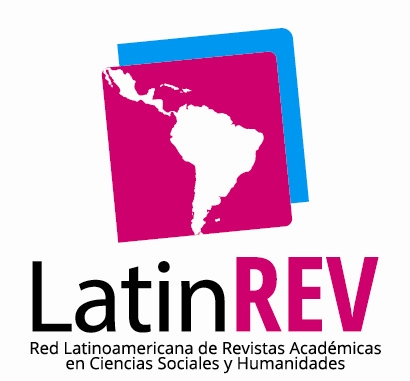Intimate partner violence: sociodemographic and socioeconomic factors that influence abuse against women in the metropolitan area of Bucaramanga, Colombia
DOI:
https://doi.org/10.35622/j.rep.2023.01.005Keywords:
anxiety, informality, Covid - 19, workersAbstract
The present investigation was carried out with the objective of describing the levels of anxiety experienced during the confinement of informal workers located in a municipality in the department of Sucre, Colombia. The research was supported under the quantitative, descriptive, non-experimental methodology. The population consisted of 35 participants assigned to the census previously carried out by a national public institution (municipal mayor's office). To obtain the necessary information to carry out the study, a Likert scale questionnaire was used. It can be highlighted from the results obtained that the anxiety levels in the study population were not altered by the confinement produced by Covid 19, where 21.8% stated that they had felt irritable at the beginning of the pandemic and of the sample studied. 4 workers showed slight irritability, 2 of them moderately, and the remaining 7 workers became severely irritated due to the confinement caused by the pandemic. It is concluded that the anxiety levels were not directly affected by the confinement by Covid 19, however the stressors are the determinants in the search for tools to reduce its consequences.
Estadísticas del Artículo
References
Álvarez, A., León, D, Medellín, M, Zambrano, A. & Zuleta, H. (2020). Coronavirus in Colombia: vulnerability and policy options. Universidad de los Andes, Bogotá, Colombia. https://www.sdgphilanthropy.org/system/files/2020-07/undp-rblac-CD19-PDS-Number11-EN-Colombia.pdf
Argüelles, J.M. (2014). The Meaning of Work for Elderly Grocery Baggers in Monterrey, Mexico: A Precarious Job or a Social Opportunity? The International Journal of Aging & Society, 3(2), pp. 7-18. Doi:10.18848/2160-1909/CGP/v03i02/35238.
Asmundson., G & Taylor,.S (2020). Coronaphobia: Fear and the 2019-nCoV outbreak. Revista Elsevier. journal of Anxiety Disorders. 70. https://doi.org/10.1016/j.janxdis.2020.102196
Barlow, D. (2002). Anxiety and its disorders: The nature and treatment of anxiety and panic, 2nd edition, New York: the Guildford Press.
Beck, A. T. (2013). Terapia cognitiva para trastornos de ansiedad. Desclée De Brouwer.
CEPAL. (2020). Estudio Económico de América Latina y el Caribe 2020: principales condicionantes de las políticas fiscal y monetaria en la era pos-pandemia de COVID-19. https://cutt.ly/X9k0MIo
Cepal. (2020). El desafío social en tiempos del COVID-19. Informe Especial COVID-19, N° 3, Santiago, 12 de mayo. https://www.cepal.org/es/publicaciones/45527-desafio-socialtiempos-covid-19
Cudris-Torres, L., Barrios-Núñez, A., & Bonilla-Cruz, N. J. (2020). Coronavirus: epidemia emocional y social. Archivos Venezolanos de Farmacología y Terapéutica. http://saber.ucv.ve/ojs/index.php/rev_aavft/article/view/19452
Clark, DA y Beck, AT (2010). Terapia cognitiva de los trastornos de ansiedad: ciencia y práctica. Prensa Guilford.
De Soto., H. (1987). El otro sendero. Editorial Diana. México. DOI: https://doi.org/10.24201/edu.v3i2.685
Departamento Administrativo Nacional de Estadística (DANE). (2021). Mercado Laboral. https://www.dane.gov.co/index.php/293-sociales/mercado-laboral
Departamento Administrativo Nacional de Estadística (DANE). (2020). Medición de empleo informal y seguridad social. https://cutt.ly/d9k2rnt
Organización Internacional del Trabajo OIT (2020). Panorama Laboral 2020. América Latina y el Caribe. https://www.ilo.org/americas/publicaciones/WCMS_764630/lang--es/index.htm
Pabón, M. V. R. (2014). El trabajo informal en Colombia e impacto en América Latina. Observatorio laboral Revista venezolana, 7(13), 23-40. https://www.redalyc.org/pdf/2190/219030399002.pdf
Portafolio (2021). ¿Cuánto ha perdido el PIB de Colombia por la pandemia? Portafolio. https://www.portafolio.co/economia/cuanto-ha-perdido-el-pib-de-colombia-por-lapandemia-549815
Fernández, C., y Villar, L. (2016). A Taxonomy of Colombia´s informal labor market. Bogotá: Fedesarrollo. https://cutt.ly/O9k2dZq
Galvis., L (2012). Informalidad laboral en las áreas urbanas de Colombia. Coyuntura económica: investigación económica y social. 42 (1), 15-5. https://cutt.ly/y9k2bkO
Uribe., J, García., & Ortiz., C (2007). La segmentación del mercado laboral colombiano en la década de los noventa. Revista de Economía Institucional, 9 (16). https://www.redalyc.org/articulo.oa?id=41991608
Williams., C; Horodnic., I. (2016). An institutional theory of the informal economy: some lessons from the United Kingdom. International Journal of Social Economics, 43(7), 722-738. https://doi.org/10.1108/IJSE-12-2014-0256
Published
Issue
Section
License
Copyright (c) 2023 Maria Gutiérrez-Calderón, Kelly Díaz-Therán, Geraldine Caldera-Guillin, Yerlis Cotera-Requena, Carolina Hoyos-Martínez, Marbelis Díaz-Almanza (Autor/a)

This work is licensed under a Creative Commons Attribution 4.0 International License.
La Revista Estudios Psicológicos del Instituto Universitario de Innovación Ciencia y Tecnología Inudi Perú está sobre una licencia internacional Creative Commons Atribución 4.0. Lo que permite que los archivos sean de libre acceso y distribuidos libremente.
LOS AUTORES RETIENEN SUS DERECHOS:
- Los autores retienen sus derechos de marca y patente, y tambien sobre cualquier proceso o procedimiento descrito en el artículo.
- Los autores retienen el derecho de compartir, copiar, distribuir, ejecutar y comunicar públicamente el artículo publicado en la Revista Estudios Psicológicos (por ejemplo, colocarlo en un repositorio institucional o publicarlo en un libro), con un reconocimiento de su publicación inicial.
- Los autores retienen el derecho a hacer una posterior publicación de su trabajo, de utilizar el artículo o cualquier parte de aquel (por ejemplo: una compilación de sus trabajos, notas para conferencias, tesis, o para un libro), siempre que indiquen la fuente de publicación (autores del trabajo, revista, volumen, número y fecha).



















